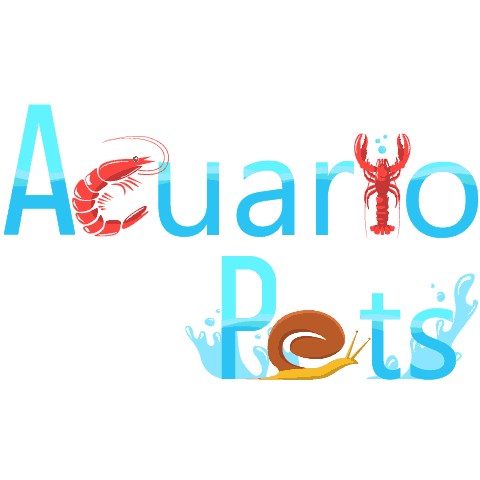This post was created with help from AI tools and carefully reviewed by a human (Muntaseer Rahman) . For more on how we use AI on this site, check out our Editorial Policy.
Check Out These FREE Tools We Made JUST For You!
7 Signs Your Bearded Dragon Is Stressed Out (And How to Fix It)

Look, I get it. You brought home your bearded dragon thinking you’d nailed the perfect setup, and now your little buddy’s sporting dark marks like some kind of reptilian mood ring. Before you panic-Google at 2 AM (again), let’s talk about what’s actually going on with your stressed-out dragon.
The Belly Never Lies: Stress Marks
Here’s the thing about bearded dragons – they wear their stress literally on their skin.
Stress marks show up as dark lines, spots, or splotches on your dragon’s belly, chin, neck, and legs. Think of them like those color-changing mood rings from middle school, except your beardie didn’t ask for this feature.
But wait – not all dark marks mean disaster. Baby bearded dragons frequently show stress marks because they’re constantly growing and adapting, and dragons also develop these marks when shedding or during mating season.
Some dragons even have naturally darker patterns that are just part of their look. The key is noticing when those marks suddenly appear or get way darker than usual.
The Fix:
Check your setup first. We’ll get into the nitty-gritty below, but those marks are your dragon’s way of saying “something’s off here, buddy.”
Glass Surfing Like They’re Auditioning for the Olympics
You know what I’m talking about. That frantic paddling against the glass like they’re trying to swim through it.
Glass surfing happens when your beardie repeatedly runs or scratches at the tank walls, often indicating stress from inadequate space, incorrect temperatures, or seeing their own reflection.
It’s like watching someone try to escape a room with invisible walls. Sometimes it’s kind of funny until you realize they’re genuinely distressed.
The Fix:
Add a terrarium background to block reflections, or cover the sides with cloth temporarily. Also, make sure your tank is big enough – minimum 55 gallons for adults, and honestly, bigger is always better.
The Black Beard of Doom
When your dragon’s beard goes from its normal color to straight-up black, that’s their version of throwing up a stop sign.
A puffed-up, darkened beard means they feel stressed or threatened. It’s their dramatic way of saying “back off” or “something’s very wrong here.”
Now, male bearded dragons can act a little crazy during mating season (September to March), showing black beards, head bobbing, and running around frantically. If it’s breeding season, this might just be your dragon being, well, a dragon.
The Fix:
If it’s not mating season, look for the stressor. New pet in the house? Moved the tank? Too much handling? Give them some space and minimize changes.
Suddenly They’re Not Hungry (And That’s WEIRD)
Bearded dragons are usually little eating machines. So when yours turns down a juicy cricket, alarm bells should go off.
Loss of appetite is a common stress response and can be caused by incorrect temperatures, parasites, changes in diet, or too much handling.
Here’s where it gets tricky: Low tank temperatures prevent proper digestion, leading to constipation and making them not want to eat. It’s a vicious cycle.
The Fix:
Double-check your temperatures with an actual thermometer (those stick-on ones are garbage). Basking spot: 100-108°F for adults, 105-110°F for babies. Cool side: 77-85°F.
Make sure you’re leaving lights on for at least an hour after feeding so they can properly digest.
Playing Dead: When Your Dragon Goes Full Sloth
If your normally active dragon suddenly becomes a scaly paperweight, something’s up.
Lethargy – unusual inactivity or lack of engagement – signals stress or illness and can result from wrong setup, dehydration, or health issues.
They might hide more than usual, barely move, or just look… off. Like they’re running on 2% battery.
The Fix:
This one’s serious. Check all your husbandry basics first (temps, lighting, hydration), but if lethargy continues, get them to a reptile vet ASAP. Stress suppresses the immune system, leading to health complications.
Open Mouth Breathing (No, They’re Not Trying to Sing)
An open mouth, often accompanied by a puffed-up beard, is a sign of a stressed dragon.
Before you freak out completely, they might just be thermoregulating if they’re basking. But if they’re doing this all the time, away from the basking spot? That’s your cue.
The Fix:
Check for overheating first. Is your basking spot too hot? Is there nowhere cool enough to escape? They need that temperature gradient to regulate properly.
Avoiding You Like You Owe Them Money
If your normally friendly beardie consistently avoids contact, runs to hide when you approach, or closes their eyes and freezes when you get near, they’re stressed.
Even chill dragons need alone time, but sudden personality changes are red flags.
The Fix:
Limit handling to about 10-15 minutes daily. Yeah, I know they’re cute and you want to hang out, but sometimes love means giving them space. Also, pay extra attention when kids or strangers are handling your dragon.
The Real Talk: Getting Your Setup Right
Here’s where most stress actually comes from – the basic setup being wrong. Let’s fix it.
Temperature: It’s Not Negotiable
Your beardie is cold-blooded. Without proper temps, they literally cannot function. They need a basking spot between 100-108°F and a cool side between 77-82°F to maintain their optimal body temperature of around 93°F.
At night? Adults can handle drops to 65-70°F, while babies need 75-80°F.
Get a proper thermometer. Not the cheap stick-on kind – those can be off by 20 degrees. Use a temperature gun or digital probe thermometer.
Lighting: The Triple Threat
You need three types of light, and yes, they all matter:
UVB Light: Use a T5 HO tube light (ReptiSun 10.0 or Arcadia 12%), positioned to create a UVI of 4.0-6.0 in the basking area. Those coil bulbs? Throw them away. They don’t work properly and can cause eye problems.
Replace UVB bulbs every 6 months even if they still look fine. The UVB output dies long before the visible light does.
Basking Light: Use halogen flood bulbs in a dome fixture to create that proper basking temperature. The wattage depends on your setup, but you’re aiming for that 100-108°F sweet spot.
Bright White Light: Bright light with a color temperature of 6000-7000K is important for mental health, appetite, and activity levels. Dragons with extra daylight lighting are more alert and active.
Keep all lights on 10-12 hours per day. Get a timer so you don’t forget. Your dragon’s circadian rhythm depends on it.
Tank Size: Bigger Really Is Better
Bearded dragons need a minimum 55-gallon tank that’s at least 36 inches long. A cramped tank equals a stressed dragon. Period.
The Things That’ll Definitely Stress Them Out
Let me save you some trouble:
Never house bearded dragons together. When they share a tank, bearded dragons fight for dominance, and the weaker one can end up injured, sick, starving, or killed. Yeah, it’s that serious.
Skip the heat rocks. They’re notorious for causing burns.
No red or blue night lights. Reptiles can see colored lights, and they disrupt sleep patterns. If you need nighttime heat, use a ceramic heat emitter.
When to Actually Worry
Most stress is fixable with better husbandry. But if you see prolonged loss of appetite, persistent aggression, weight loss, or signs of physical illness like lesions or abnormal feces, get to a reptile vet.
Don’t mess around with respiratory issues either. Coughing, gasping, wheezing, or discharge from eyes, ears, nose, or mouth means something’s seriously wrong.
The Bottom Line
Your bearded dragon can’t tell you what’s wrong in words, but they’re shouting it with their body. Those stress marks? The glass surfing? The black beard? They’re all ways of saying “help me out here.”
The good news? Most beardie stress is totally fixable. Get your temps right, nail the lighting, give them enough space, and ease up on the handling. Watch them transform from stressed-out pancake back into the spiky little weirdo you fell in love with.
And hey, if you’re reading this at 2 AM because you’re worried about your dragon? That already makes you a pretty great reptile parent. Now go check those temperatures and get some sleep. Your beardie will thank you tomorrow.
About Author
Hello, I’m Muntaseer Rahman, the owner of AcuarioPets.com. I’m passionate about aquarium pets like shrimps, snails, crabs, and crayfish. I’ve created this website to share my expertise and help you provide better care for these amazing pets.
Disclaimer
This site is owned and operated by Muntaseer Rahman. AcuarioPets.com is a participant in the Amazon Services LLC Associates Program, an affiliate advertising program designed to provide a means for sites to earn advertising fees by advertising and linking to Amazon.com. This site also participates in other affiliate programs and is compensated for referring traffic and business to these companies.

